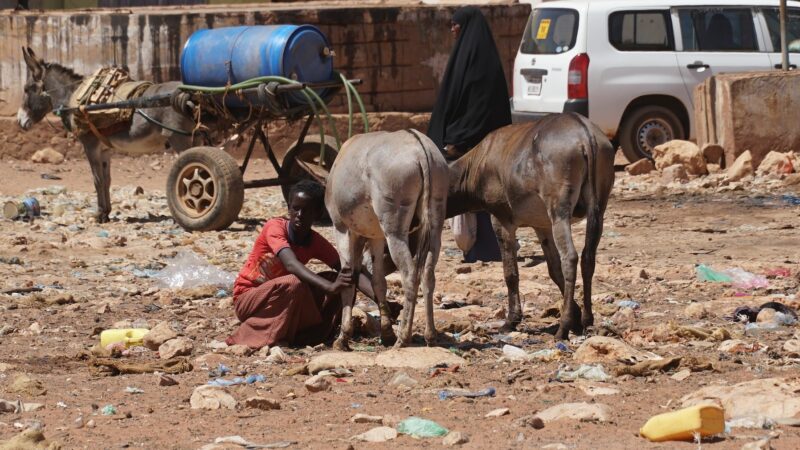Nigel Farage is Britain’s unofficial ambassador to the United States
On Saturday, late British time, former President Trump and presumptive nominee to be the Republican candidate for November, survived assassination by mere millimetres. A bullet, fired from an AR-15, aimed at Donald Trump’s head grazed his ear instead, thanks to an unbelievably lucky turn of the head as Trump looked at the graph on immigration statistics behind him.
A shooter on the roof of a nearby building, missed through a toxic combination of incompetence and lack of coordination between security forces, shot at the former President several times before being taken down by the security forces. The forces who, it has come to light, had the shooter in their sites for several minutes before he began shooting. Arguments have erupted over whether the threat should have been neutralised sooner, or by who, but in reality he should never have gotten that close. The entire security service should hang its head in shame.
While the world rushed to condemn – or, in the particularly nasty and degenerate corners of the internet, celebrate – the 20-year old shooter, the leader of the Reform party and newly-sworn in MP for Clacton, Nigel Farage, announced that he would imminently be travelling to the US to visit his friend and fellow traveller on the populist right, to lend his support.
The necessity of this move can be debated. Prime Minister Sir Keir Starmer has already rung Trump and offered his wishes, and the 78 year old Republican is already out and about, back on the campaign trail and preparing for the Republican National Convention in Milwaukee this week. This is without even mentioning the fact that, after being shot, Trump got back to his feet, raised his fist in defiance and chanted “fight!”
Some rushed to decry Farage’s decision, pointing to his responsibility as an MP, and no doubt using this as an example of his unprofessionalism and self-aggrandisement. Others said that there is no real need, and Farage should focus on issues closer to home, especially as the King’s Speech is on Wednesday – though Farage did say he would not go before the speech.
Such reactions ignore the humanity of this situation. A man nearly lost his life, and while Farage’s medical credentials are certainly questionable in this instance, the value of having a friend speak to you and visit you after such a shocking moment can be invaluable. And while there is a world of difference between the projectiles, Farage is almost certainly fearful that one day a milkshake might be something closer to what Trump faced. Never forget that Andy Ngo once had to attend the ER in America after a milkshake thrown over him was found to have concrete mixed in.
Moreover, Farage was more than likely going to attend the RNC in Milwaukee this week anyway; this simply makes his visit more personal.
Yet, whether you agree with his politics or not, Farage’s very close relationship with the once-and-probably-future President of the most powerful nation in the world should not be sniffed at. Farage, like him or not, is going to be an asset should Trump return to the White House in January 2025 – a prospect that, more than ever, seems likely.
Rather than criticising Farage for making a decision which, it must be remembered, is entirely his prerogative – senior Conservatives visited America during the election campaign, and Lisa Nandy was in Germany for the Euros final this weekend, and rightly so – the British government should recognise Farage’s value in the special relationship.
This is not even to mention the fact that many populist parties in Europe look to the architect of Brexit with great admiration, Nigel Farage’s international profile is greater than some members of the cabinet, and is certainly more amenable to some foreign political parties.
Nigel Farage’s role in the coming parliament is likely to be one of unofficial ambassador – to the United States, certainly, and more than likely many other nations. It would be a mistake to undervalue and underestimate that.



Victims, Aren’t We All?
Following Donald Trump’s recent announcement concerning returning to Butler, Pennsylvania just over a month after an assassination attempt was made on his life there, there are many things to reflect on.
One of them is one of the few bright spots from the fallout of that event: that being much of the left finally getting a taste of their own medicine for once when it came to cancel culture. Many of those who attempted to downplay and mock the horror, alongside those who expressed disappointment that the would-be killer didn’t hit his target, felt the full wrath of the Frankenstein’s monster they had developed for decades. The parody band Tenacious D and streamer Destiny were the biggest casualties of this, all the while many others were targeted also, from school administrators and Home Depot employees, with the popular X account LibsofTikTok being the witchfinder general on that end.
Despite such an atmosphere and such scalps, many objected to such behaviour, out of some well-intentioned (if ultimately misguided) commitment to principle against cancel culture as a whole. As expected, many centrist commentators (like Triggernomtrey’s Konstantin Kisin and satirist Andrew Doyle) echoed this point, but more surprising were prominent right-wing accounts, often seen as ‘dissidents’ of the movement, the sort of type expected to appear on Alex Kaschuta’s Subversive podcast.
In particular, anon X accounts, like Peachy Keegan and Posts by Feds came to the defence of those being cancelled, especially when it came to the aforementioned Home Depot employee, who they felt didn’t deserve such vitriol.
All of these are undoubtedly pleasant and well-meaning sentiments, and not without some legitimacy. Indeed, the right shouldn’t perhaps get too carried away with such attitudes when the wind blows in our direction – as Nietzsche once noted, ‘Beware that, when fighting monsters, you yourself do not become a monster… for when you gaze long into the abyss. The abyss gazes also into you.’
Despite this, I can’t help but feel that such attitude overall is not the best for this moment or any like it when we can finally use these tools against the left.
Firstly, it is true that every society has boundaries on what is acceptable and what isn’t. As far as not wanting a political opponent dead goes – especially just after an assassination attempt – that is perhaps a pretty good standard for what isn’t acceptable in a free society to advocate for, all the while being a pretty low bar to meet in a democratic society.
Add to that how politically volatile much of the United States is in right now, any attempt to raise the temperature in such a way to make the tinderbox more likely to explode is beyond reckless and reprehensible. Wanting to stem and cull those who attempt to do so, whether they be well-known celebs or simple custodians, is something perfectly legitimate and sensible to want to do.
This is especially true in Trump’s case. This is a man who has already had much vilification against him to the point whereby his possible death seemed to be something much of the mainstream was happy to egg on, including the several calls for his murder by celebrities, and the Beeb going as far as to air a documentary sympathetic to a previous attempted Trump assassin in Michael Sandford (therefore, the swift backlash to maintaining that atmosphere is an improvement from years past). Given that, alongside the increased political violence against the right across the West (including the attempt against former Slovakian PM Robert Fico), any attempt to further normalise such attitudes is definitely not good for any body politic, let alone the divisive one we have now.
Secondly, the left has cancelled several people on the right for far less over the years, and no-one was safe from that. One many lament Tenacious D being dropped from their talent agency but joking about the assassin missing Trump is objectively far worse than what Winston Marshall did to be chased out his own band Mumford and Sons or what Morrissey did to be effectively shunned by much of the music world that once adored him. Their crimes? The former praised Andy Ngo’s book Unmasked: Inside Antifa’s Radical Plan to Destroy Democracy while the latter supported unpopular political parties and criticised much of the UK political class.
Many fans of Destiny may be irritated that he can no longer be monetised on several platforms, but that is nothing compared to YouTuber Felix Kjellberg (better known by his ‘PewDiePie’ alias) being fired from his Maker Studios agency after a smear campaign by the Wall Street Journal to portray him (falsely) as antisemitic over edgy jokes, let alone the lawfare against YouTubers Mark ‘Count Dankula’ Meechan and 6oodFella over similar social media edgy jokes.
One may feel sorry for the Home Depot cashier, but many other custodians were thrown under the bus to little attention. Take Brian Leach, a disabled Asda worker who was fired for sharing a Billy Connelly joke seen as ‘anti-Islamic’ by colleagues. Or Beverly Lockwood, a woman fired from Arc Engineers for being a member of dissident political organisations. Or Gillian Phillips, a children’s author fired from HarperCollins for supporting J. K. Rowling and had to retrain as an HGV driver to make ends meet. Or William Kelly, a Virginian police officer, who was fired for financially supporting Kyle Rittenhouse in his 2021 trial. And the worst part is that this is by no means exhaustive, with these links providing more comprehensive lists to that regard.
That leads me to my final point. We are in a culture war. One side is taking it very seriously, using their power and influence to silence those it doesn’t like for banal reasons – the recent culling of the anti-mass immigration website VDare by lawfare is a good example of this. If the other side isn’t willing to fight back in a similar matter because of some so-called principle, it will not win and doesn’t deserve to.
I for one would love nothing more than a return to the idea of having an equilibrium with the left about not cancelling anyone. For that to work however, there must be one in the first place – something impossible when one side is hopelessly unbalanced. Until the right can wield some scalps and cancel its opponents on its own reasonable terms – such as not wanting the death of a much-maligned political enemy – then there is nothing to be gained from being high and mighty while accomplishing precisely diddly squat, an albatross the right has borne around our necks for far too long. The equilibrium can only emerge once we win, and the left has to agree to our terms of peace.
So do not weep for those on the left who are cancelled. At best pity them, but no more. In fact, I would suggest this: when they happily laugh and wallow in glee as VDare is shut down or they grin as the recent wave of rioters in Britain are jailed for holding sticks or naughty social media posts, revel in similar behaviour when the shoe is on the other foot, whether it be against the unemployed Home Depot colleague or in support of the hefty sentences for the midwit extremists of Just Stop Oil they are so in dismay of.
Until there is victory, there can be no honour. While we wait, we might as well take advantage for when the roles are reversed as best we can, to hopefully end this once and for all. Or to quote the villainous Derrick Lynch from Namco’s Crisis Zone arcade game: ‘So you will understand and fear, your own foolish mistakes’.
Photo Credit.